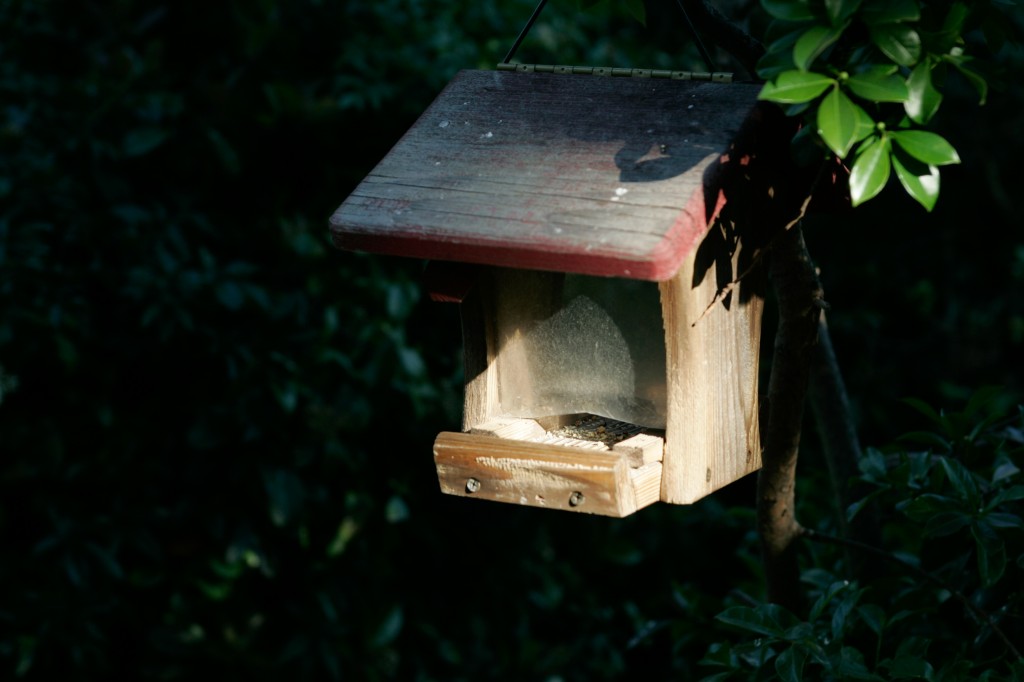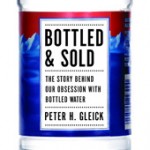The Dry Garden: Letting go
Posted on | November 12, 2010 | 2 Comments
 There may be something more painful than letting go of a garden built from scratch and largely by hand, but I haven’t experienced it. Yet after 12 years in the only home I have known in Los Angeles, it’s time to move. The young oaks, toyon, ceanothuses, sages and fruit trees will need to ingratiate themselves to the new owners, or die. Signs painted by local schoolchildren will stay. My father’s ashes along with the graves of three beloved dogs cannot come with me. They are all bound up in the plants.
There may be something more painful than letting go of a garden built from scratch and largely by hand, but I haven’t experienced it. Yet after 12 years in the only home I have known in Los Angeles, it’s time to move. The young oaks, toyon, ceanothuses, sages and fruit trees will need to ingratiate themselves to the new owners, or die. Signs painted by local schoolchildren will stay. My father’s ashes along with the graves of three beloved dogs cannot come with me. They are all bound up in the plants.
Yet handing over the garden isn’t difficult because of sacred dust. It’s the living that haunt me. It’s unexpectedly intense affection for the defiantly stray cat that I have taken to feeding. It’s hoping that the mourning doves that I have fed and supplied with fresh water every day since July 1998 find new food and new water. (How I regret ever having enticed them.) It’s because there’s never a good moment to leave a garden. A garden is never finished.
Click here to keep reading The Dry Garden in the Los Angeles Times.
The State Water Project in pictures
Posted on | November 8, 2010 | 2 Comments

Water pumped up the foothills of the Tehachapi Mountains. Source: Aquafornia. Click on the image to be taken to Aquafornia's new slide show on California's State Water Project.
Aquafornia, the newsfeed of the Water Education Foundation, today published an educational side show on the history of the State Water Project. For those who wonder just how big a challenge to keep California hydrated Governor Jerry Brown inherited on November 2nd, click here to learn about the massive water-moving endeavor that his father, Governor Pat Brown, began in the 1950s.
The beginning of the slide show is straight up California heraldry. Glorification of the Department of Water Resources might seem a bit Soviet to those who never knew a winter without fresh fruit or vegetables. But keep clicking to follow the water. Once you do, the steadfast tracing of the project will equip you to understand news stories also running daily on Aquafornia about the California water bond that we are told we so desperately need but won’t pass, about water banking deals that drain the Bay Delta while enriching a Beverly Hills billionaire, about the energy needed to move water to Southern California, about canals buckling because of subsidence caused by groundwater pumping, about what’s pushing California salmon to extinction — our water withdrawals or Sacramento and Stockton sewage? Aquafornia shows us the dams, reservoirs, canals, pumps and pipes behind our grandeur and fragility.
“Dumb, dumb, dumb” and “a pinch silly”
Posted on | November 5, 2010 | 2 Comments
 “Dumb” and “silly” sum up the response last month of Matthew Kahn to my review of his book Climatopolis. Click here for the review and here for the response. Those who questioned Kahn’s choice in Climatopolis of Moscow as one of the more climate change-ready cities will learn that he was not wrong in the book because in his revised estimation last summer’s deadly heat wave leaves Muscovites better versed in disaster. Residents of Salt Lake City may be relieved to learn that they are not in peril of sea level rise, and Antonio Villaraigosa may rest assured that he was not being mocked by the misspelling of his surname; the decision to call the Latino Mayor of Los Angeles “Tony” is left unexplained. The failure of my review to correlate with notices in the British press is offered as evidence that my assessment was unsound. Please note that as a rule the quotation marks in the Kahn text connote the author’s emphasis but are not quotes.
“Dumb” and “silly” sum up the response last month of Matthew Kahn to my review of his book Climatopolis. Click here for the review and here for the response. Those who questioned Kahn’s choice in Climatopolis of Moscow as one of the more climate change-ready cities will learn that he was not wrong in the book because in his revised estimation last summer’s deadly heat wave leaves Muscovites better versed in disaster. Residents of Salt Lake City may be relieved to learn that they are not in peril of sea level rise, and Antonio Villaraigosa may rest assured that he was not being mocked by the misspelling of his surname; the decision to call the Latino Mayor of Los Angeles “Tony” is left unexplained. The failure of my review to correlate with notices in the British press is offered as evidence that my assessment was unsound. Please note that as a rule the quotation marks in the Kahn text connote the author’s emphasis but are not quotes.
By way of response, I stand by the assessment of the book, which I found flip and shoddy. However I commend Mr Kahn for his constant effort to keep climate change preparedness front and center in civic discourse and, by extension, public policy-making. Ignoring triumphal garbage coming from the newly elected majority in the House of Representatives, climate change cannot be wished away. It would be folly to ignore his central premise, which is that those born into the best prepared societies will indeed inherit the Earth.
To regular readers of this website, my apologies. I am in the packing box stage of a house-move. Sunday’s regular feature “The week that was” is still suspended but will return next week.
*This was updated at 9.40am, 11/6/2010. Details of the Kahn rebuttal were added, along with the postponement notice about “The week that was.”
Plastic product placement on ABC
Posted on | November 5, 2010 | 2 Comments

Product placement: A "brain surgeon" with her almost constant companion, a plastic single use water bottle, in ABC's Private Practice. Source: ABC
There are various ways to advertise on network television, but only product placement inoculates the message against the fast forward button. In the case of ABC’s Private Practice, a medical drama set in Santa Monica, California, a sales pitch for bottled water was even written into the script recently. A character who we are to accept as an Ivy League-trained brain surgeon was given a speil about how ready access to bottled water untroubled by guilt about the bottle’s persistence in the environment for 1,000 years was what she loved about the show’s ocean-side clinic. With this insouciance for hire, ABC managed the ultimate perversion. No, not asking us to accept a bimbo as a brain surgeon. Much worse: Using the Pacific as backdrop for a crap program while justifying a way of life that is filling up the Pacific with crap.
How much crap? Terrifying amounts. Click here to listen to Captain Charles Moore, founder of the Algalita Marine Research Foundation on Great Pacific Garbage Patch and its impact on sea birds and marine life on the Patt Morrisson show on KPCC. Or read Peter Gleick’s “Bottled and Sold: The Story Behind our Obsession with Bottled Water.” For information about plastics and Southern California beaches, go to Heal the Bay. For information about the November 6 Tedx conference in Los Angeles about the Great Pacific Garbage Patch, click here.
The Dry Garden: Hesperaloe
Posted on | November 5, 2010 | No Comments

Mushy leaves of South African aloe can't do this. The fibers of the Chihuahuan Desert native Hesperaloe are used in cordage.
Four years ago, I learned that a lady up the street whom I had for six years referred to as Chloe was named Cheryl. In much the same fashion, I only recently learned that a plant in my parkway that for five years I have called nolina is in fact Hesperaloe parviflora.
I learned this while singing the plant’s praises to a gardening class that had dropped by to see my rain catchment system. If there is comfort in this, it’s that hesperaloe is one heck of a plant by any name.
A member of the agave family and native to the Chihuahuan Desert, hesperaloe’s tolerance for cold (to 12 degrees) and heat (100-plus degrees) means that the plant can cope easily with what our Mediterranean climate can throw at it.
Click here to keep reading The Dry Garden in the LA Times.
« go back — keep looking »



